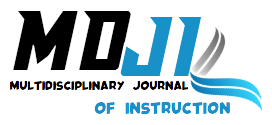Machine Learning for Flavor and Texture Prediction in Novel Food Product Development
Keywords:
Machine learning, flavor prediction, texture prediction, food product development, sensory analysis, ingredient optimizationAbstract
Abstract: The development of novel food products requires a thorough understanding of flavor and texture, as these two sensory attributes significantly influence consumer acceptance and preference. Traditionally, the prediction of flavor and texture has been a time-consuming and trial-and-error process. However, recent advancements in machine learning (ML) have revolutionized the food product development process by enabling more accurate and efficient prediction models for these sensory characteristics. Machine learning algorithms, including supervised learning, deep learning, and reinforcement learning, are increasingly being employed to predict flavor and texture profiles based on ingredient compositions, processing parameters, and sensory data. By leveraging large datasets from sensory testing, chemical analysis, and consumer feedback, ML models can identify complex relationships between raw materials and final product attributes, thereby streamlining product development and reducing time-to-market. Additionally, ML can optimize formulations by suggesting ingredient combinations that will achieve desired sensory profiles, reducing the need for extensive physical testing. This approach also holds the potential for personalizing food products based on individual preferences and dietary requirements, further enhancing consumer satisfaction. Despite the promising capabilities of ML in flavor and texture prediction, challenges remain in obtaining accurate and representative datasets, as well as ensuring the models' generalizability across different food matrices. This paper explores the applications of machine learning in flavor and texture prediction, discusses the methods and techniques involved, and highlights the opportunities and challenges in utilizing ML for novel food product development.
Downloads
Published
Issue
Section
License

This work is licensed under a Creative Commons Attribution-NonCommercial-NoDerivatives 4.0 International License.




